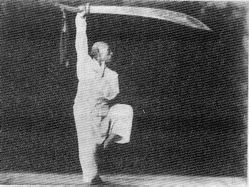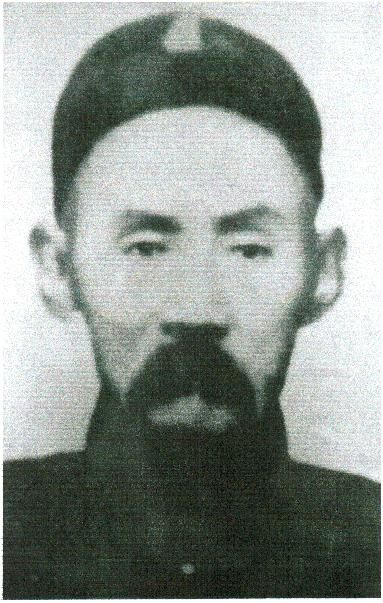Jade Dragon Internal Martial Arts
Our Internal Martial Arts Curriculum
About Internal Martial Arts
Internal Martial Arts, like Tai Chi, Bagua, and Hsing-i, function by focusing on cultivating "Qi" (internal energy) through deep breathing, relaxation techniques, and mindful movement, utilizing leverage and body alignment to generate power rather than relying solely on muscle strength, aiming to achieve a harmonious balance between mind and body, allowing practitioners to redirect and utilize an opponent's force against them through softness and fluidity.
Key aspects of Internal Martial Arts:
Yang Style Tai Chi Chuan
We teach the traditional Yang Style Tai Chi. Our lineage is from the CMC and Huang Xingxiang schools. The class can be purchased online and will be taught in educational pods and supported by me with email and/or through our upcoming Facebook and community groups. Each pod will build on the previous pod and will give detailed instruction on the form, the ten essential points of Yang Chen Fu, the eight separate jings, push hands and many other deeper practices of Tai Chi. The first form you learn will be the CMC 37 posture set. Later learning will be the 108 posture long form along with Tai Chi Sword and Tai Chi Sabre. Tai Chi is an amazing martial art but is probably more well known for it's ability to reduce stress and increase health. It helps with focus, clarity and a sharp mind.


Xing Ie Chuan
Within our Martial Art curriculum at JDMAA, the first internal art we teach is Xing Ie Chuan. There are some practical reasons for this. First, it is energetically the easiest to develop. The power manifestation is not as nearly complex as that of Tai Chi Chuan or Baguazhang. It also has many aspects that are very helpful with developing internal power that feed incredibly well into the Five Ancestor Fist style. We teach this at proficiency level 12 (equivalent to 2nd degree black sash).
Xing Ie Chuan Curriculum
History of Xing Ie Quan
Baguazhang
Baguazhang is an amazing internal martial art and internal practice. Literally defined as the eight trigram palm method it employs eight separate palm changes in its practice. However, what is not taught very often is the tremendous internal practice that is employed within this martial art. At JDMAA we teach the complete practice of Baguazhang. This includes ALL of the peripheral training that allows for the development of the necessary internal qualities that make this such an effective martial art as well as an INCREDIBLE internal practice!

More about Baguazhang
Baguazhang History
Learn the Complete Ba Duan Jin for Free!!!
Click the link to the right and you will be able to enroll in:
- The online complete Ba Duan Jin course! This is a $97 course you get for free!!!
- Automatically become enrolled in the Warriors in the Garden online community!
- The Warriors in the Garden Newsletter!
- Free Entry into online events with Sifu Copelan and other prominent guests!
- And More!!!
Join Our Free Community today!
And get all the benefits listed!!!
We won't send spam. Unsubscribe at any time.

 Many distinctive styles of weapons are contained within Baguazhang. Some can be concealed like the "scholar's pen" or the unique crescent-shaped deer horn knives. Baguazhang is also known for practicing with extremely large weapons, such as the Baguadao or 'Bagua Broadsword'. Other more conventional weapons are also used like the staff, double-edged straight sword, and spear. Baguazhang practitioners are also known for being able to use anything as a weapon by using the principles of their art.
Many distinctive styles of weapons are contained within Baguazhang. Some can be concealed like the "scholar's pen" or the unique crescent-shaped deer horn knives. Baguazhang is also known for practicing with extremely large weapons, such as the Baguadao or 'Bagua Broadsword'. Other more conventional weapons are also used like the staff, double-edged straight sword, and spear. Baguazhang practitioners are also known for being able to use anything as a weapon by using the principles of their art. Around 1864 Dong arrived in Beijing and he got a service job at the residence of the prince Su. He worked as a servant and waiter in the prince's household. Fearing prosecution for transgressions of his earlier days, he kept his fighting skills a secret from the public. During a crowded banquet, however, he caught people's attention by lightly maneuvering through the banquet-hall packed with guests, and even climbing walls, serving drink and food. The prince recognized that Dong Haichuan must be skilled in martial arts and asked him to perform for him and his guests. Not being able to refuse his master's wish, Dong Haichuan did as he was asked, impressing the crowd with his performance. The noble's personal bodyguard - a muslim by the name of Sha Hui-Tsu - saw his position threatened by Dong Haichuan and so he challenged him to a fight. Sha was soundly defeated. Prince Su later appointed Dong Haichuan as head of the bodyguards in the palace and as tax collector, basically the prince's hard man.
Around 1864 Dong arrived in Beijing and he got a service job at the residence of the prince Su. He worked as a servant and waiter in the prince's household. Fearing prosecution for transgressions of his earlier days, he kept his fighting skills a secret from the public. During a crowded banquet, however, he caught people's attention by lightly maneuvering through the banquet-hall packed with guests, and even climbing walls, serving drink and food. The prince recognized that Dong Haichuan must be skilled in martial arts and asked him to perform for him and his guests. Not being able to refuse his master's wish, Dong Haichuan did as he was asked, impressing the crowd with his performance. The noble's personal bodyguard - a muslim by the name of Sha Hui-Tsu - saw his position threatened by Dong Haichuan and so he challenged him to a fight. Sha was soundly defeated. Prince Su later appointed Dong Haichuan as head of the bodyguards in the palace and as tax collector, basically the prince's hard man. Dong and his top student Yin Fu went to Mongolia to collect taxes for ten years. Upon his return he left the prince's household and he began to teach publicly, giving up all other occupations to devote himself to developing and teaching Baguazhang. He synthesized his previous experience with village martial arts, travelling fights, Daoist studies, and also the skills he learned as a waiter, to create a unique art originally called Zhuan Zhang (Turning Palms). It was in his public teaching period that the art was given the name Baguazhang (eight tri-gram palm).
Dong and his top student Yin Fu went to Mongolia to collect taxes for ten years. Upon his return he left the prince's household and he began to teach publicly, giving up all other occupations to devote himself to developing and teaching Baguazhang. He synthesized his previous experience with village martial arts, travelling fights, Daoist studies, and also the skills he learned as a waiter, to create a unique art originally called Zhuan Zhang (Turning Palms). It was in his public teaching period that the art was given the name Baguazhang (eight tri-gram palm).